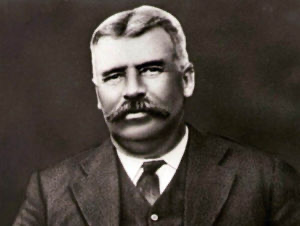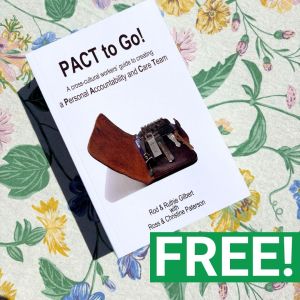George Stott (1835-1889) was a British Protestant Christian missionary to China with the China Inland Mission.
When Stott arrived in Wenzhou in the late 1860’s there were probably no Christian believers in the city. As a result of his and his wife Grace’s work and that of others, Wenzhou is known today as the “Jerusalem of the East” because “in the entire Wenzhou Municipality, which has 6 million inhabitants, there are more than 600,000 evangelical Protestants – 10% of the population.” “Decades later, when the church was growing, Wenzhou church leaders attributed much of the church’s numerical success to Stott’s patient determination and the seeds planted in those early years.”
His was no ordinary missionary life. His wife Grace wrote “When he was about nineteen years of age he slipped on the road and knocked his knee against a stone. This simple accident necessitated two years later in the amputation of the left leg. For nine months he lay a helpless invalid, and it was during this time that the Lord graciously saved his soul. So far he had been careless and indifferent to the love of God in Christ Jesus, but now, in his helpless condition, and what seemed his ruined future, how precious that love became!”
In early 1865, Stott learned that Hudson Taylor was looking to recruit pioneer missionaries for the China Inland Mission. Stott, provided with a new artificial leg, set sail for China on October 4, 1865. Taylor sent Stott a few months ahead of the Lammermuir party, which was the official birth of the China Inland Mission.
Two statements that Stott made need repeating. Firstly, he is said to have claimed Isaiah 33:23 to define why in spite of his amputee condition he felt called to be a missionary: “The lame will take the prey.”
Secondly “when asked why he, with only one leg, should think of going to China, he remarked, “I do not see those with two legs going, so I must.” A challenging statement indeed!
He faced a foreign culture and its foreign religions with little preparation and no language training. Yet while in Wenzhou, he and Grace began primary schools, preacher training courses, and several small congregations. He traveled from village to village, attracted a crowd, and then preached to them, often in the open air. It was hard work. He described the noisy Chinese crowds in this way: “Nobody listens, but everybody shouts at the top of his voice, and such shrill, piercing sounds, no Saxon throat could produce anything like them.” By 1874 they had visited nearly all the villages within a day’s journey of the city. The progress continued to be slow and at the end of ten years of work, their church had only eighteen members. George commented that although many attended chapel it was hard to “stir up a spirit of inquiry in the city.… Hardly anyone cared to listen…. Thousands every year have heard more or less of the gospel, and yet we have seen very little fruit, but it may not be lost if it drives us closer to God, from whom all power comes.”
By 1882 the CIM mission in the Wenzhou area had grown to five gatherings of Christians, two of which were organized churches. Four of the gatherings were at Wenzhou out-stations and one was in the city. There was a total of eighty-two communicants, with fifty-six men and twenty-six women. “In this year the mission also had two boarding schools with thirteen girls and four boys, and a Chinese staff which included four preachers, two chapel-keepers, one school-teacher, and one Bible-woman.”
However, later Broomhall described the Zhejiang church (the province in which Wenzhou lies) as a nursery for the growing church in China, supplying “evangelists, colporteurs, Scripture readers, and schoolteachers from its thriving congregations.”
Stott’s work was marked by Scottish determination. “These first years in Wenzhou demonstrated his steady perseverance, and eventually helped alleviate suspicions held by several Wenzhou people, allowing them opportunities to know him better and reassess his motives as some of their anti-foreign sentiments lessened.”
There was also a negative side to his strong personality. “He increasingly came into conflict with Hudson Taylor and offered to resign in a protest letter. The CIM stopped sending recruits to his station.”
In 1887, George Stott left Wenzhou for the last time. “George’s poor health necessitated their absence.” He and his wife had returned from China after their mission was destroyed by rioters in 1884. Stott died on April 21, 1889, on Easter morning. Grace returned to China and re-established the mission in Wenzhou. She then led the mission and eventually retired in 1909 and died in Canada in 1922.
The bottom line is a simple one. The Wenzhou church, one of the fastest growing in China today, was founded by a one-legged Scotsman!



